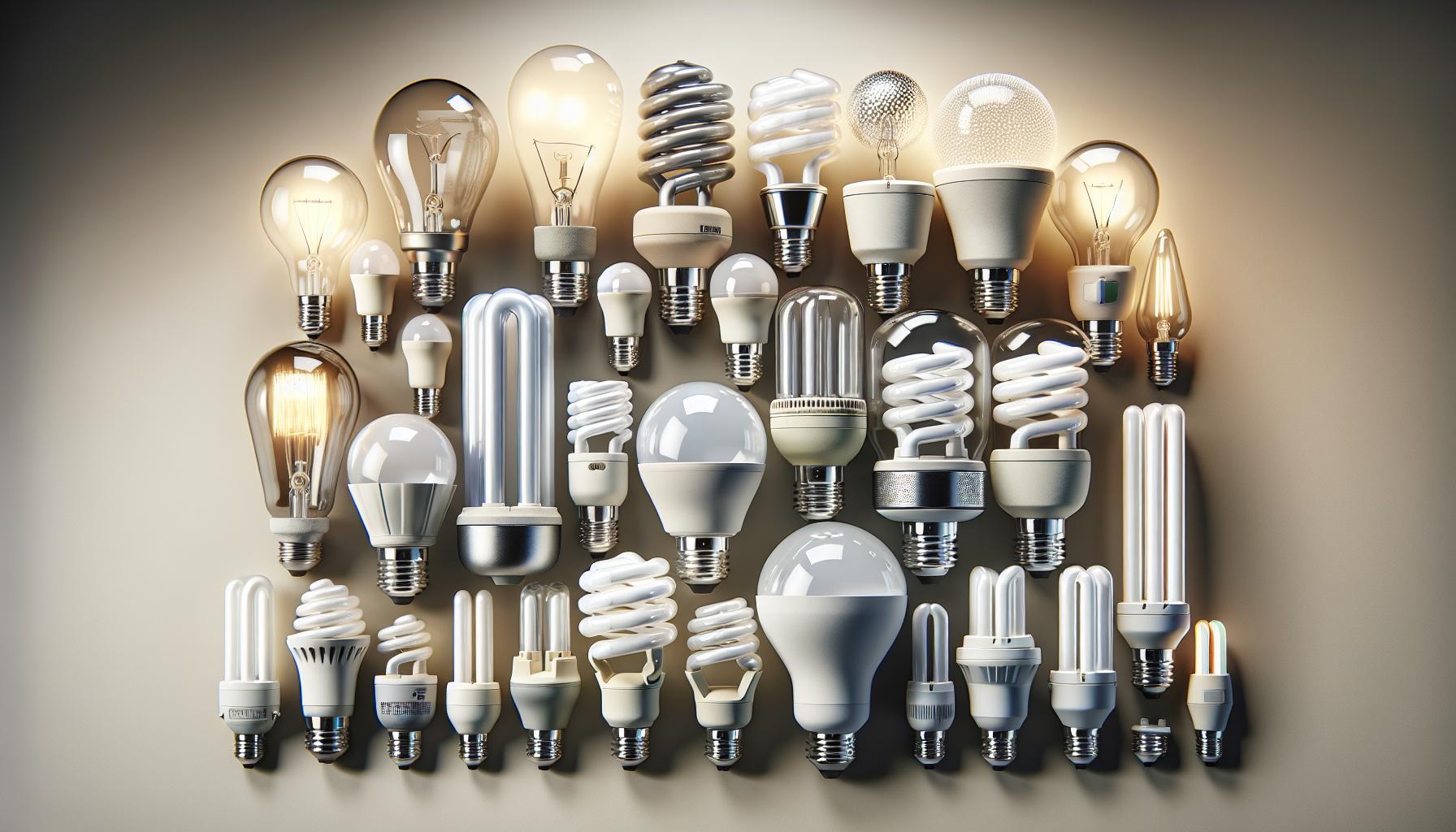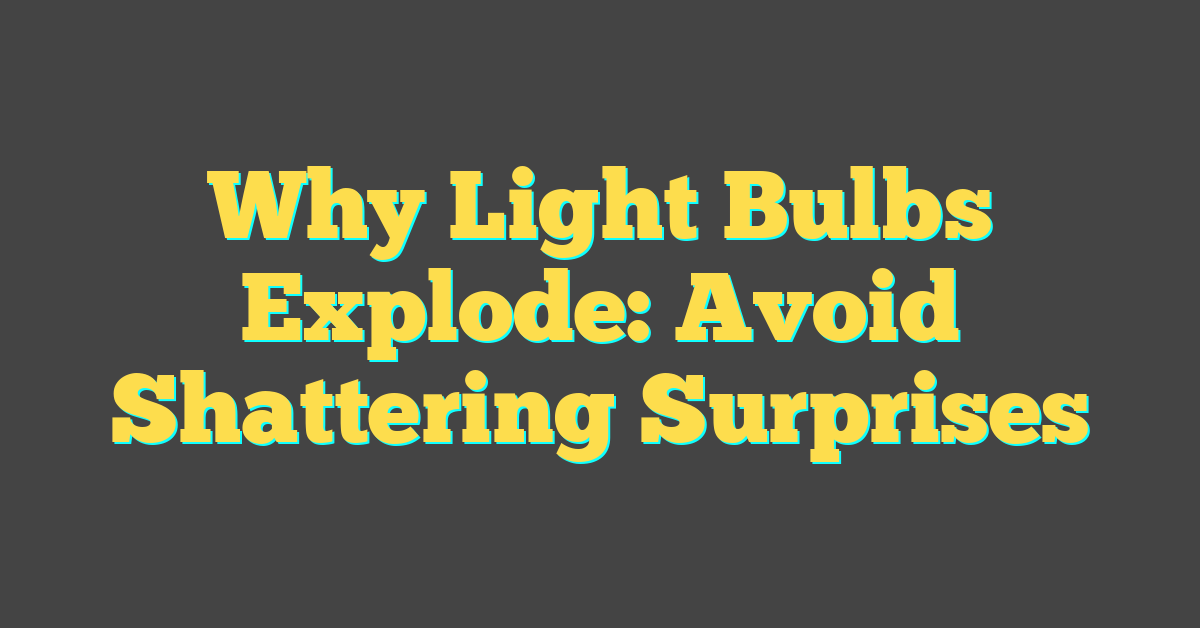Ever wondered what magic happens inside that glassy sphere hanging from your ceiling? Light bulbs are your everyday superheroes, transforming the dark into a cozy, welcoming space with just a flick of a switch. They’ve been around for ages, but their role in your daily life is as vital as ever.

How does a light bulb work?
Ever wondered how a twist of your wrist can banish the dark? It’s all about the science of illumination. Electricity is your light bulb’s best friend. When you flip that switch, electrical current rushes in, greeting the filament inside the bulb. This filament, often made of tungsten, resists the electric flow, and that resistance transforms electrical energy into heat. But it’s not just about warmth; when the filament gets hot enough, it glows, casting light in every corner of your room.
Modern light sources aren’t content with just heating filaments. LEDs (light-emitting diodes) work differently. When electricity flows through an LED, it passes through a semiconductor, which then emits photons — those nifty little particles of light. LEDs don’t waste much energy on heat, making them the superstars in energy efficiency. Plus, they can last an impressive 25,000 hours or more!
Here’s a brief rundown of how light bulbs have advanced:
- Incandescent bulbs heat a filament to produce light; they’re your classic bulbs, but they’re not too keen on energy efficiency.
- Fluorescent lights excite gases, gift you with UV light that a phosphor coating inside the tube converts into visible light. They’re cooler than incandescents but can still flicker and buzz.
- Halogen bulbs, a type of incandescent, run hotter while providing a bright, white light. Although more energy-efficient, they can still have you sweating over your energy bill.
- CFLs (compact fluorescent lamps) are like the quiet cousins of fluorescent lights, screwing into the same sockets as incandescents but using a fraction of the electricity.
With a passion for home DIY projects, you can appreciate the subtleties that each light source brings to the table. The soft glow of an incandescent sets a moody ambiance while the brightness of halogen can be perfect for your workspace. Let’s not overlook the rainbow of LEDs that can transform your home’s vibe with just a tap on your phone! Each light bulb tells a story; understanding their inner workings lets you choose the ideal narrator for every room.
The invention of the light bulb

Have you ever wondered how the idea of the light bulb sparked into existence? Thomas Edison’s name often shines bright in discussions about the light bulb, but the journey to its invention started long before his time.
In the early 1800s, Humphry Davy introduced the first electric light, the arc lamp. Although impractical for home use, it ignited a quest. Numerous inventors from around the globe were drawn to the challenge of creating a durable, commercially viable light source powered by electricity. They worked with various materials, from carbonized bamboo to metal filaments, striving to find the right element that could emit a warm, inviting glow without burning out too quickly.
In 1879, Edison’s relentless experiments brought forth the incandescent bulb. His design featured a carbon filament housed in an oxygen-less glass bulb – a crucial element for extending the bulb’s life. While Edison did not invent the first electric light or the first incandescent bulb, he dramatically improved the technology, making it accessible for everyday use.
Let’s shed some light on lesser-known pioneers like Sir Joseph Swan and Heinrich Göbel, who also made significant contributions to inventing and perfecting the light bulb. These innovators refined the materials and processes that would eventually lead to the light bulbs you pick out for your favorite home DIY lighting projects.
With the invention of the light bulb, the world experienced a revolutionary shift. Nighttime activities were no longer limited; cities began to glow after sunset, and homes transformed with the flick of a switch. The light bulb evolved from a novel invention to a staple in daily life, symbolizing human ingenuity and the persistent pursuit of progress.
In today’s world, light bulbs do much more than illuminate. They can set the mood, save energy, and even communicate with smart home systems. It’s a long way from those early sparks of Davy’s arc lamp, isn’t it? Now, let’s continue illuminating different aspects of light bulbs as we move forward.
Types of light bulbs

When you’re standing in the lighting aisle, the array of options can be downright dazzling. Let’s shed some light on the main types of bulbs you’ll find and what they offer.
Incandescent Bulbs
Ah, the classic incandescent. These bulbs are the original electric light source and have a warm, inviting glow that’s perfect for cozy, ambient lighting. They’re not the champions of energy efficiency, but they’re dimmable and offer that timeless aesthetic you might be after for certain projects.
Compact Fluorescent Lamps (CFLs)
« What Happens If You Put the Wrong Light Bulb In? Avoid These Lighting Mistakes
What Light Bulbs Are the Most Energy Efficient? Discover Money-Saving Options »
CFLs, the curly cues of the light bulb world, were the first major step away from incandescent bulbs in the quest for energy savings. They last much longer and use less power but take a moment to warm up to their full brightness. Plus, their color rendering can be a bit off sometimes, so they’re not ideal if you’re aiming for picture-perfect illumination.
Light-Emitting Diode (LED) Bulbs
LED bulbs are the current frontier in lighting technology. These powerhouses are known for their incredible energy efficiency and longevity. They turn on instantly, come in a variety of color temperatures, and many are smart-home ready, allowing you to change the mood with just a tap on your smartphone.
Halogen Bulbs
Halogen bulbs are incandescent’s hotter, more efficient siblings. They produce a light that’s similar in quality to natural daylight, which is great for task lighting. Remember that they tend to run hot and have a shorter lifespan than CFLs and LEDs, so weigh your options for the task at hand.
Specialty and Smart Bulbs
There’s a whole sub-genre of bulbs for those unique and high-tech situations. Whether it’s bulbs with adjustable color spectrums for health and wellness, or light bulbs that can blast your favorite tunes, the innovation in this category is quite literally brilliant.
Arming yourself with this knowledge will not only help you pick the perfect bulb for any scenario but also ensure that you’re making a choice that aligns with your energy goals and design vision. Remember, the right lighting can totally transform a space, so consider what vibe you’re going for before making your selection. Don’t be afraid to get creative – after all, light plays a crucial role in setting the mood and functionality of any room.
Benefits of using light bulbs

Imagine walking into a room bathed in the warm glow of a soft white light bulb, or perhaps you prefer the energizing ambiance of a daylight tone to kickstart your morning. The benefits of light bulbs extend beyond mere illumination; they transform your living space, optimize your mood and enhance your productivity.
Efficiency tops the list when you’re talking LEDs or CFLs. These bulbs are champions at converting electricity to light, meaning more brightness for less buck. Over time, they’ll save you a significant amount of cash on your energy bills.
Consider safety and longevity as well. Traditional incandescent bulbs get hot, posing a risk if they’re near flammable materials. On the other hand, modern bulbs like LEDs run cooler and reduce that risk. They also outlast their older cousins by thousands of hours, which means less ladder-climbing for you and more time spent on your favorite DIY projects.
- Instant On: Unlike older fluorescents, many modern bulbs light up immediately when switched on.
- Dimmable Options: Create the right atmosphere with bulbs that adjust brightness to suit your activity.
- Color Temperatures: Match the room’s function with the right color temperature, from relaxing warm whites in the bedroom to clear, bright whites in your home office.
Health and Well-Being can’t be overlooked. The right lighting can improve your sleep patterns and circulate, by mimicking natural light. Some bulbs even filter out blue light, which can interfere with sleep, ensuring that you’re not tossing and turning when you switch the lights off.
Improved productivity is another plus. Good lighting reduces eye strain and fatigue, which means those hours you spend crafting, reading, or working at home are more comfortable and effective. It’s the difference between a hobby and a passion, a task and an achievement.
But perhaps the most exciting aspect of modern light bulbs is their Smart Features. Imagine adjusting your lights with a simple voice command or from your smartphone. These bulbs can adapt to your routine, provide you security while you’re away, and welcome you home with the perfect lighting every time.
So, as you’re renovating your space or simply replacing a burnt-out bulb, remember these benefits and choose wisely. Your home’s lighting isn’t just about seeing – it’s about living smarter and brighter.
Conclusion
So there you have it—you’re now well-versed in the transformative power of the humble light bulb. It’s not just about seeing where you’re going. It’s about crafting an environment that suits your lifestyle and needs. Whether you’re looking to boost your focus, set a relaxing ambiance, or simply light up your space, there’s a bulb out there that’s perfect for you. Remember, the right lighting can do wonders for your space and your well-being, so choose your bulbs wisely. Happy lighting!
Frequently Asked Questions
What are the main benefits of using light bulbs mentioned in the article?
Light bulbs provide more than just illumination; they can transform living spaces, influence mood, enhance productivity, and come with features such as efficiency, safety, longevity, and the “instant on” option. Advanced bulbs offer dimmable settings and adjustable color temperatures as well.
How can light bulbs impact health and well-being?
Proper lighting can lead to improved sleep patterns, reduced eye strain, and overall better health and well-being. The choice of light bulbs is crucial in creating an environment conducive to these benefits.
What are the advantages of LED bulbs over traditional bulbs?
LED bulbs stand out for their efficiency, safety, longevity, and the ability to turn on instantly without needing to warm up. They are a more energy-efficient and durable lighting option.
Can the atmosphere of a room be adjusted with modern light bulbs?
Yes, modern light bulbs offer dimmable options and different color temperatures that allow customization of a room’s ambiance to suit various needs and preferences.
What smart features do modern light bulbs offer?
Modern light bulbs come equipped with smart features such as voice commands and smartphone control, adding convenience and personalization to home lighting systems.




